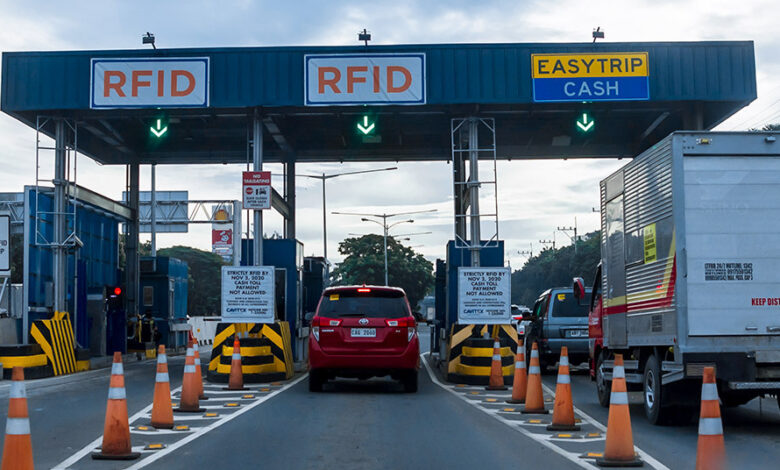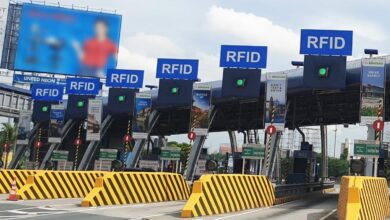
One RFID for All? Still Confused? Here’s What You Need to Know
When the Toll Regulatory Board (TRB) announced its plan to unify RFID toll systems, the news was meant to bring relief. One sticker, one wallet, one seamless drive across all expressways in Luzon. But instead of clarity, it sparked a flood of questions from motorists who already have two stickers—Easytrip for Metro Pacific tollways and Autosweep for San Miguel Corporation’s network—with separate loads sitting in each account.
For weeks, the comments have been relentless: Do we need to replace our stickers? What happens to our remaining load? Which one will work when the new system begins?
These are fair questions, as the promise of convenience feels incomplete when the details remain unclear. So here’s what we actually know.
Do motorists need to replace their RFID stickers?
Not for now.
The TRB has not ordered any replacement or reinstallation. So both Easytrip and Autosweep tags remain valid and functional on their respective tollways. Moreover, if your tag still registers at the toll gate, there’s no need to line up for a new one.
The long-term goal is a single, interoperable RFID tag that can be read across all expressways, but that rollout is still under technical testing. What’s happening now is a series of controlled trials between the two operators to make sure both systems can detect each other’s tags reliably. Until the system proves stable, motorists are advised to keep their current stickers.
Can motorists still use both RFID systems?
Yes. In fact, you still need to.
Easytrip covers NLEX, SCTEX, CAVITEX, and CALAX, while Autosweep covers SLEX, Skyway, STAR, TPLEX, and NAIAx. Unless your daily route stays entirely within one network, it’s safest to maintain both tags for now.
The eventual vision is for a single tag to unlock both systems, but the accounts remain separate. So two wallets still apply.
So how do you transfer your balance from one RFID to the other?
You can’t—at least not yet.
Moving funds between the two systems, or into the upcoming “One RFID,” isn’t possible for now. However, you can request a refund instead. Both Easytrip and Autosweep allow refunds of remaining balances once you close your account and surrender your tag, though processing can take time. Also, when the unified system launches, a single wallet will follow.
Which RFID should motorists keep if they want only one?
Until interoperability is fully rolled out, you’ll still need both if you regularly drive across both networks.
Did the TRB conduct dry runs before announcing the plan?
Yes, but quietly.
Pilot tests were carried out earlier this year to evaluate how each operator’s sensors read the other’s tags. According to TRB officials, results have been “encouraging” but not yet perfect. Tag readability and synchronization between databases are still being refined to prevent failed detections or duplicate charges.
The TRB maintains that full interoperability is achievable but insists that rollout will be gradual to avoid the kind of traffic chaos seen during earlier cashless toll transitions.
What about double charging and unreadable tags?
These remain valid concerns.
Motorists have reported cases where both systems deducted simultaneously or where one toll gate failed to detect the tag. TRB and the toll operators have acknowledged the issue, noting that improvements to antenna calibration and account synchronization are ongoing.
For now, the public is advised to monitor account statements, keep receipts for disputed charges, and report inconsistencies through official hotlines. The agencies have promised reversals for verified cases of double deduction.
Will full interoperability really happen by 2025?
That’s the target.
The TRB aims to complete full cashless and unified toll collection by the end of 2025, covering all expressways in Luzon. Achieving this means two things: one RFID sticker recognized by all toll operators and one electronic wallet linked to that sticker.
Whether the timeline holds depends on how fast the system stabilizes and how well Metro Pacific and San Miguel align their technologies. Both have expressed support, but neither has confirmed a public launch date.
So what should motorists do now?
For now, stay put.
Keep your stickers clean and readable. Maintain enough balance on both accounts if you use both networks. There is no deadline, no penalty, and no need to replace your tags yet. The government says the transition will be phased and transparent once ready.
RELATED — Universal RFID for All: Yes or No?
The frustration is understandable. For many, this could have been simple good news—finally, one tag for everything. Instead, the rollout has left motorists guessing. But as the TRB continues its testing, what’s certain is that the current system still works, even if imperfectly.
The road to one RFID is open. It’s just not fully paved yet.




